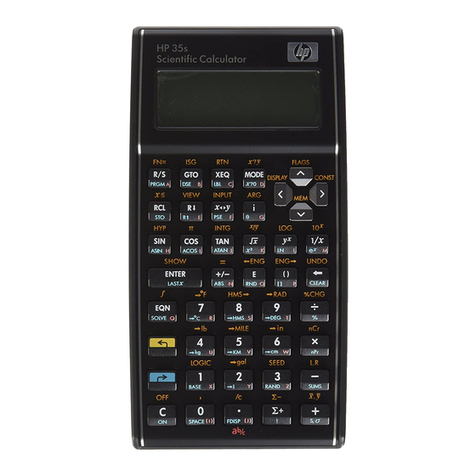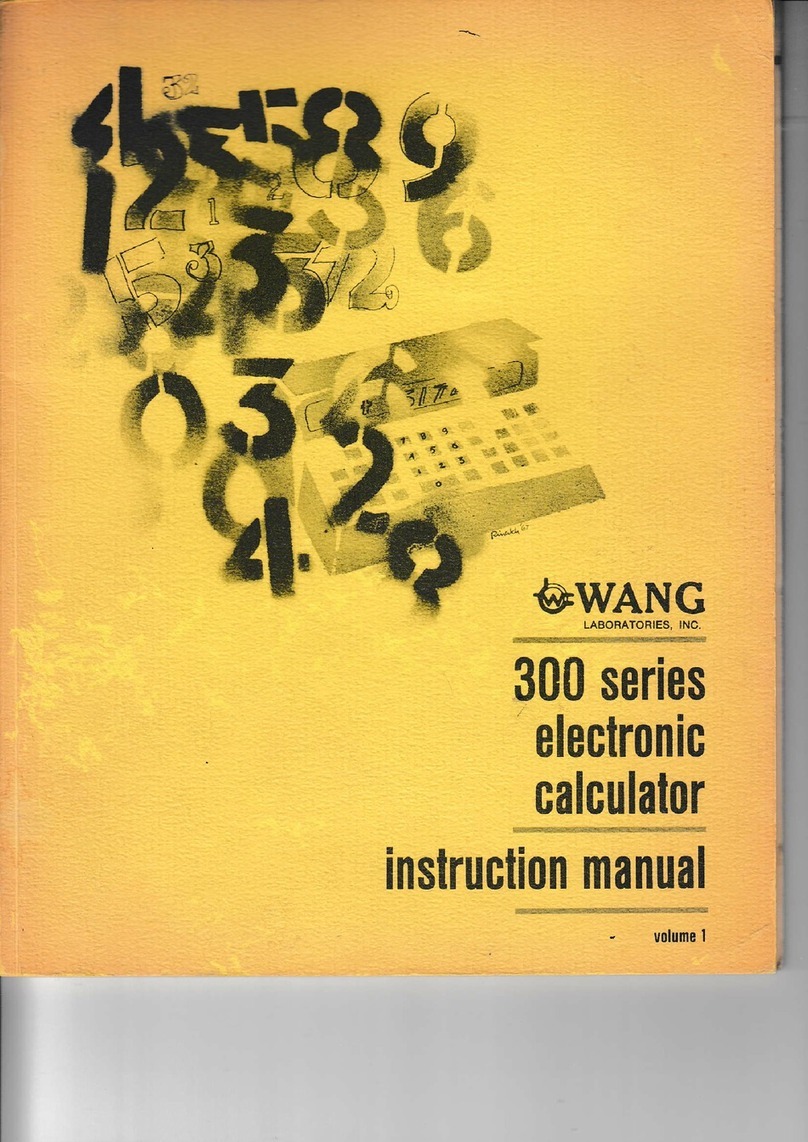Table
of
Contents
TABLE
OF
CONTENTS
SECTION
I -
INTRODUCTION
Introduction
. . . . . . •• • • • • •••• • •••• • • • ••
1-1
••••
SECTION
II
-
EXPLANATION
OF
KEYS
Modes
of
Operation.
. . . . . . . . . . . . . . . . . . . . . . .
Run Mode . . . . . . . . . . . . . . . . . . . . . . . . .
..
.
Learn
Mode'.
.........................
.'
Learn-Print
Mode.
. . . . . . . . . . . . . . . . . . . . . . . .
List-Program
Mode
........................
Turning
the
700
ON.
......................
Non-Programmable
Key
......................
Prim
e . . . . . . . . . . . . . . . . . . . . . . . . . . . . .
Program
Counter
and
Set
PC . . . . . . . . . . . . . . . . . . . .
Ste
p.
. . . . . . . . . . . . . . . . . . . . .
..
. . . . . . .
Verify
Program
.........................
Record
Program
. . . . . . . . . . . . . . . . . . . . . . . . .
The
Display.
. . . . . . . . . . . . . . . . . . . . . . . . . .
X-
Register
. . . . . . . . . . . . . . . . . . . . . . . . . . .
En
tering
aNum
ber
. . . . . . . . . . . . . . . . . . . . . . . .
Set
Exp
. . . . . . . . . . . . . . . . . . . . . . . . . .
..
.
Y-Register . . . ......................
..
.
Program-Error
Indicator
. . . . . . . . . . . . . . . . . . . . . .
Data
Storage
Registers.
. . . . . . . . . . . . . . . . . . . . . .
Direct
Addressing
. . . . . . . . . . . . . . . . . . . . . . . .
Toggle
Switches
and
Special
Function
Keys
. . . . . . . . . . . . . .
S
tore
Direct.
. . . . . . . . . . . . . . . . . . . . . . . . . .
Recall
Direct
. . . . . . . . . . . . . . . . . . . . . . . . . .
Exchange
Direct
. . . . . . . . . . . . . . . . . . . . . . . . .
Add,
Subtract,
Multiply,
and
Divide
Direct.
. . . . . . . . . . . . . .
Indirect
Addressing.
. . . . . . . . . . . . . . .. . . . . . . . .
Indirect
Keys
. . . . . . . . . . . . . . . . . . . . . . . . . .
Advantages
of
Indirect
Addressing
. . . . . . . . . . . . . . . . . .
Recall
Residue.
.........................
Addition,
Subtraction,
Multiplication.
. . . . . . . . . . . . . . . .
Division ..........................
..
.
Write
Commands.
. . . . . . . . . . . . . . . . . . . . . . . .
Group
I -
Group
2.
.......................
SECTION
III -
PROGRAMMING
Coding.
............................
Generating
a
Code
Using
Special
Function
Keys
and
Toggle
Switches
Core
Memory
. . . . . . . . . . . . . . . . . . . . . . . . . .
Number
of
Registers
Occupied
By a
Program
. . . . . . . . . . . . . .
SECTION
IV
-
PROGRAM
CONCEPTS
Programming
Concepts
. . . . . . . . . . . . . . . . . . . . . .
Mark
and
Search
Commands
. . . . . . . . . . . . . . . . . . . .
Su
brou
tine
. . . . . . . . . . . . . . . . . . . . . . . . . . .
Double-Level
Subroutines
(or
a
Subroutine
within
a
Subroutine)
. . . . . .
v
2-1
2-1
2-1
2-1
2-2
2-2
2-2
2-2
2-3
2-3
2-4
2-4
2-4
2-5
2-5
2-5
2-6
2-8
2-9
2-9
2-9
2-12
2-12
2-13
2-13
2-14
2-14
2-16
2-16
2-17
2-18
2-20
2-21
3-1
3-2
3-3
3-5
4-1
4-2
4-5
4-7




























